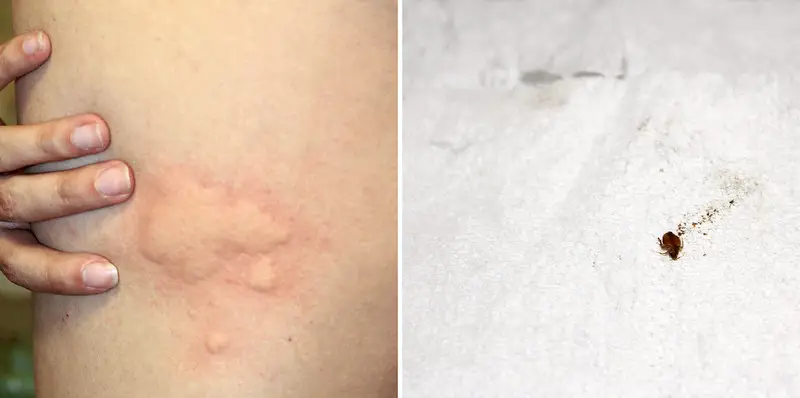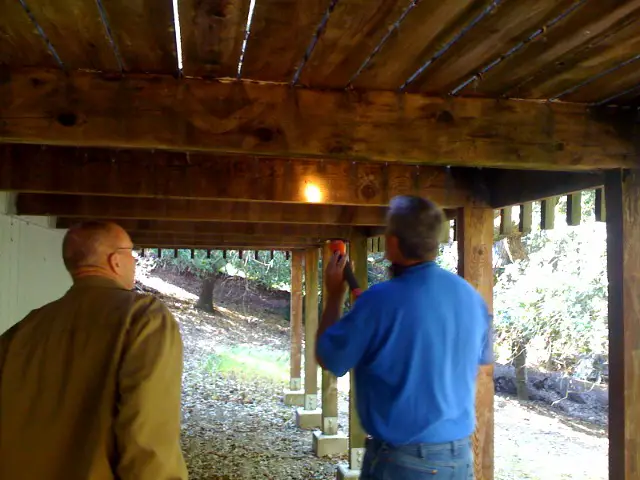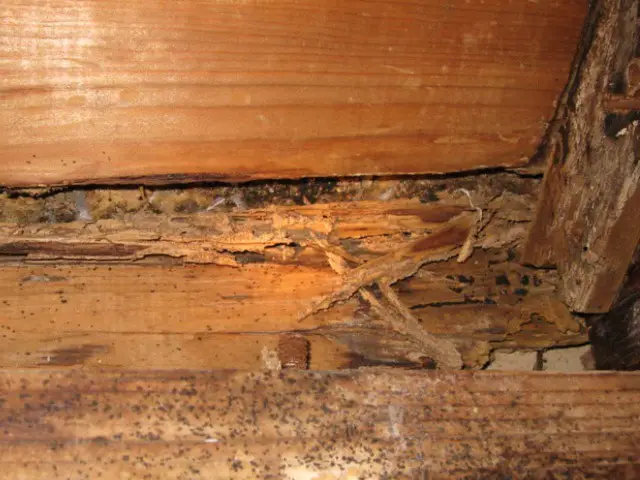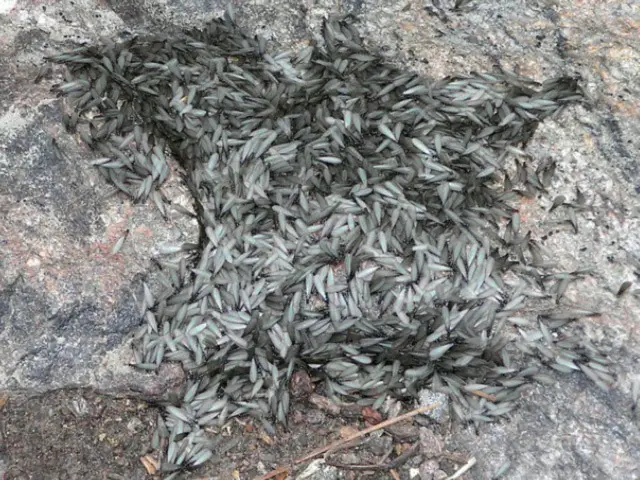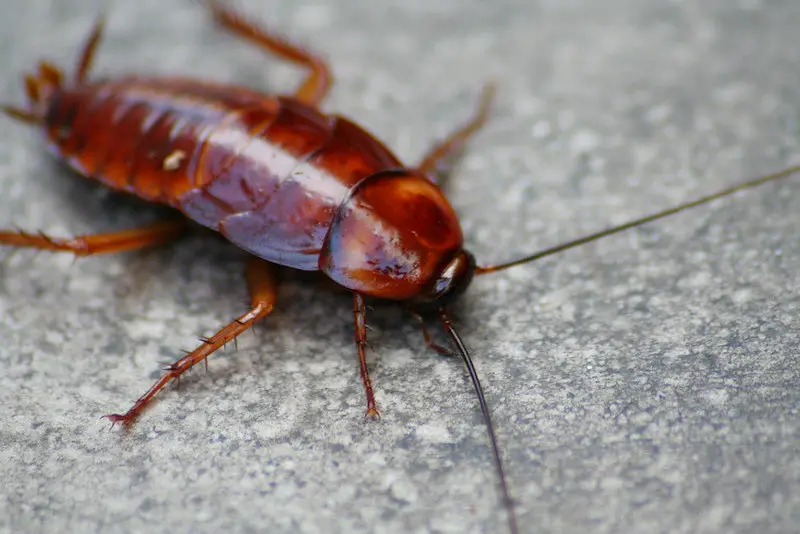What do bed bugs look like on a mattress?
Before I proceed towards how to get rid of bed bugs, I would like you to know what bed bugs look like on a mattress or if you really have an infestation.
There may be several other kinds of infestation. So how do you determine it is that of a bed bug? Here are some signs that will help you to determine an infestation.
Related post: How To Keep Bugs Away From Your House?
Signs of bed bugs on a mattress, bed, or sheets
Here are some signs that will help you determine bed bug presence on a mattress:
- The first sign is more obvious. If you have seen a bed bug, it is more likely that there is more than one.
- If you see blood stains on your mattress, sheets or bedding, there is a likelihood of bed bugs in your home. It is likely that you crushed them while they were feeding.
- Brown or reddish-brown spots on your clothing, mattress or bedding might indicate their presence as well. These stains are their fecal matter. You may find bed bug feces on sheets, mattresses, walls, etc.
- Presence of eggshells or shredded skin on the floor, bed, sheets, mattress is a sign of bed bugs.
- A large bed bug infestation will be followed by an unexplained odor in your house. This smell will be sweet yet musty. Generally, this odor is offensive and noticeable.
- Generally, three bite marks in a row is an indication of bed bugs. They move in a line as they look for the same blood vessel they used before. Make sure you read our article: “Can bed bugs bite thru clothing?“
- An effective way to identify their presence is by switching on the light without moving much. This should be done in a few hours or so before dawn. Use a flashlight during this time to identify them.
How to find, identify and trap bed bugs?
You can set a trap to see these pesky insects in action. Here are a few things you can do to detect their presence. Place a sticky tape around your bed. As the bed bugs crawl over, they will stick to it. This will not stop all of them, but you can easily detect their presence.
Use heating pads in dark areas. Now use a tape to catch them or watch their reaction. Use any of the above methods and combine them by placing a balloon in that area filled by mouth. If you remember that bed bugs like carbon monoxide, you will know how effective this is to attract them.
While there is no guarantee that bed bugs will respond to these traps, you can always try these to check for infestation.
How to find bed bugs?
Searching for bed bugs can be a daunting task; however, the ideal time to search for them is during the night. This is because they will come out to feed.
You may still try during the day; however, it will be harder to find them.
What is a bed bug?
What is a bed bug? You probably heard about bed bugs before, in nursery rhymes, in stories or from other people. Basically, a bed bug is a little bug of the nocturnal type that feeds on warm-blooded hosts, in most cases humans. Well, there are different types, but the ones we are concerned about is the one that feeds on us.
In most cases, they live in the mattresses, which explains their name; as such, they have close access to their food source, which is, again, humans. The process of them biting you can last up to five minutes, but in most cases, we won’t feel a thing until it’s all over and they are well gone to their hiding place.
On average, a bed bug will bite once a week, but they can live without feeding for up to six months. The mattress is not the only place they can hide; they will also go for the linens and seams, furniture, carpet or even books. They are able to do that because they don’t need a nest, just a safe place to hide.
They were almost annihilated in the mid-1950s, but since the mid-1990s, they have reemerged. That is due to the fact that the chemicals that were used against them were mostly banned from use. Like most insects, a bed bug has developed resistance to most kinds of pesticides, making it really hard to get rid of them.
People are mostly concerned about the effect of a bed bug bite. In 99% of the cases, it will just annoy you and cause skin irritations, but in some cases, they can even cause psychological effects and allergic symptoms. They can become a serious problem; the fact is that they multiply faster than rabbits, so if you have an infestation, you are doomed. If you notice them, you need to get rid of them quickly.
Bed Bug Facts
- Bed bugs like carbon dioxide. That is why they are attracted to your warmth.
- Once bitten by a bug, you will not feel anything for hours.
- Research says that bed bugs may survive for 18 months without eating. This is not common yet possible.
- The female bed bug is expected to lay about 500 eggs in her lifetime.
- Although they refrain from going out, they can. They may even climb up materials to invade a house.
- They may be seen inside the weaves of a shirt or pants. They will appear as a dark speck often ignored.
Although they refrain from going out, they can. They may even climb up materials to invade a house.
They may be seen inside the weaves of a shirt or pants. They will appear as a dark speck often ignored.
Now that you are aware of the lifecycle of the bed bugs, it is important to know their habits.
Well, I understand that bed bugs would be the last thing you would want to know, but understanding their habits would help you to get rid of them. Would you be interested in knowing what the bedbugs look like? I know your answer will be a big “NO.” However, we should still know to eradicate them for good.
Bed bugs enjoy the dark and avoid coming outside until it’s dark. They like to stay out of sight. They generally like to hide in small crevices and cracks. Usually, they will not travel really far from the host. However, they can venture away if need be. They can even travel throughout the house if required. The most common location for them is the mattress folds.
Bed bugs are insects that feed on blood
- The bed bug feeds on blood and it prefers to eat at night. He likes to find its host sleeping, thus lying still. This is less dangerous (Of course, it is not lovely for him to get squished) for him.
- They are swift; therefore, they can get out of the way easily.
- Their sharp, pointed beak can penetrate easily into the skin of the host. They pierce your skin and open it enough to insert fluid and withdraw your blood. The fluid contains an anticoagulant that stops the clotting process and makes the blood flow easy for the bug.
- An adult bed bug will take up to 15 minutes to feed in a single piercing.
- The nymphs will start to feed as soon as they are born. They can only feed for three to four minutes. Their feeding time increases when they grow up.
- They do not need to eat often. However, they go on their spree for a host again after five days of their initial feeding.
Bed Bug Bites
When people realize they have bed bugs in their home and they start to see bite marks, the first thing that comes to their mind is how to stop the itching. Some of them even ask if the bed bugs bites are dangerous. Well, a known fact is that each person will react to bed bug bites in a different way; it all depends on the immunity, skin type and other aspects.
In most cases, people will not feel the bite at all and in some cases, the bite will not show. The bed bugs bite you while you are sleeping, and they inject a chemical into your body that keeps the blood from coming up and you feeling the actual bite.
So the bottom line is if you are itching like crazy and your skin is showing a reaction like swelling or redness around the bite area, you are most likely allergic to the chemical that they inject into your body. There are two types of allergies to bed bugs bites, the mild and regular one, which is very common and the extreme one, which is rather rare. The mild one will cause your skin to itch, and some skin irritation will be shown. The rare one can cause some major health issues. In some cases, people can even fall into shock.
Back to the question, how to stop the itching, well, the only way to do so is to get rid of the bed bugs. Until you manage to do so, whatever you do will only be a temporary solution to your problem as they will keep biting you over and over again. The bites will disappear in a few days or even weeks, depending on your allergy level, but they will eventually disappear. The one thing you must do is get rid of them, and the bites and the itching will disappear as well.
Bed Bug Life Cycle
Why am I talking about the life cycle of the bed bugs? This is because they are born, they grow, and they live. However, if you really want to get rid of these creatures, it is very critical to understand the lifecycle so that you can handle the infestation in a better way.
It is unlikely for you to learn about the inception of the infestation. This is obvious unless you know the source. However, assuming the period from the initial infestation, you can have an idea of its severity.
How big is your bed bug infestation?
When you want to know the size of the infestation, it is necessary to know an estimate. This will enable you to ascertain that what can be done regarding the infestation. While knowing the size of the infestation might be upsetting, it can be the first step in getting rid of these pests.
Why is the bed bug lifecycle critical?
I am going to pen down the basic life cycle of the bed bug. While learning about these pests might seem to be a daunting task, it is critical to know the cycle in order to act appropriately to get rid of bed bugs.
The Bed Bug Life Cycle
The female bed bug is a critical focus. She will lay up to 12 eggs every day. These eggs will be placed at a specific place and will have the same characteristics. The mother bug will lay the eggs on a rough surface or in a crack or groove.
The eggs will take 6-17 days to hatch. The baby bed bugs are known as nymphs. As soon as they are born, their first mission is to feed. As a matter of fact, they can feed on a host (Yes, that’s you) as soon as they are born.
The baby bugs will yearn for their first blood meal, as they need it for their development. Before reaching the adult stage, the baby will go through 5 stages of molting.
Generally, they take as little as 21 days to grow from a baby to an adult.
Why is temperature important for bed bugs?
Take a note of the temperature in the area when looking at the life cycle of a bug. In order for the bugs to grow, the right temperature should be met. This temperature should be between 65-86 degrees.
If this temperature is not met, it will delay the maturity cycle. However, if the temperature is at 86 degrees, the maturity will take place in 21 days. If the temperature is 65 degrees or close, it will take as long as 120 days for the bed bugs to mature.
What do bed bugs eat?
Unlike the adult bug, the baby bug cannot live without a proper blood meal. It has to feed at least five times in order to grow. The right amount of food is a necessity in order for the bug to mature.
If the right food is not available, the maturity cycle of the nymph will be delayed. The time taken for the maturity to take place is directly proportional to the amount of food that is available for the nymph.
How long do bed bugs live?
Here is the bad news. The bed bug can make it easily through its nymph cycle into adulthood.
The primary reason for this is the fact that these pesky bugs can live without eating food for several months. While they prefer to feed every 5-10 days, they can survive for months without feeding.
On reaching adulthood, the female bed bug will start reproducing. On reaching adulthood, their life spans from a year to a year and a half. This depends on the quantity of food they receive.
The female bug produces eggs at least three times a year. This can happen more often as well.
